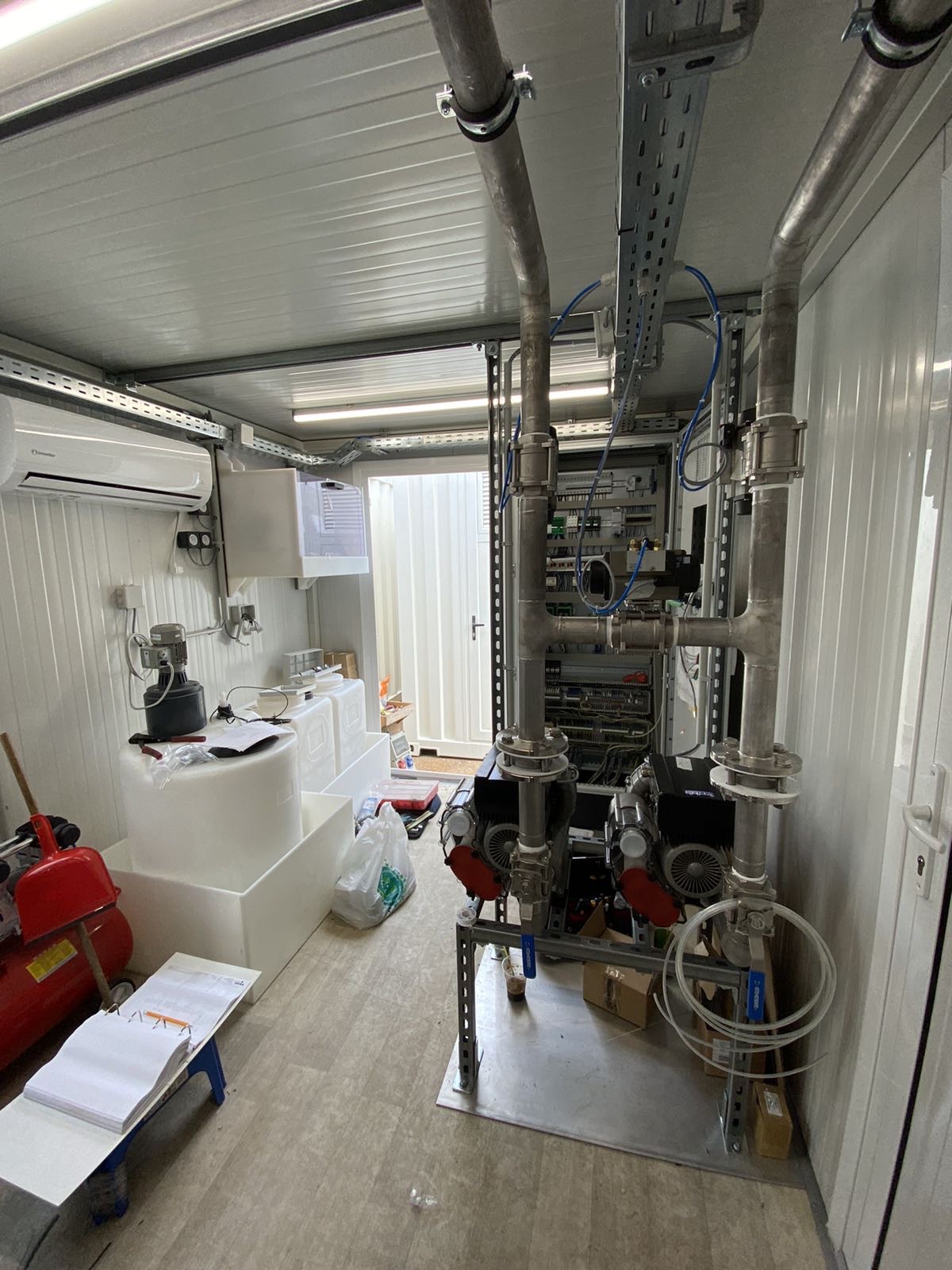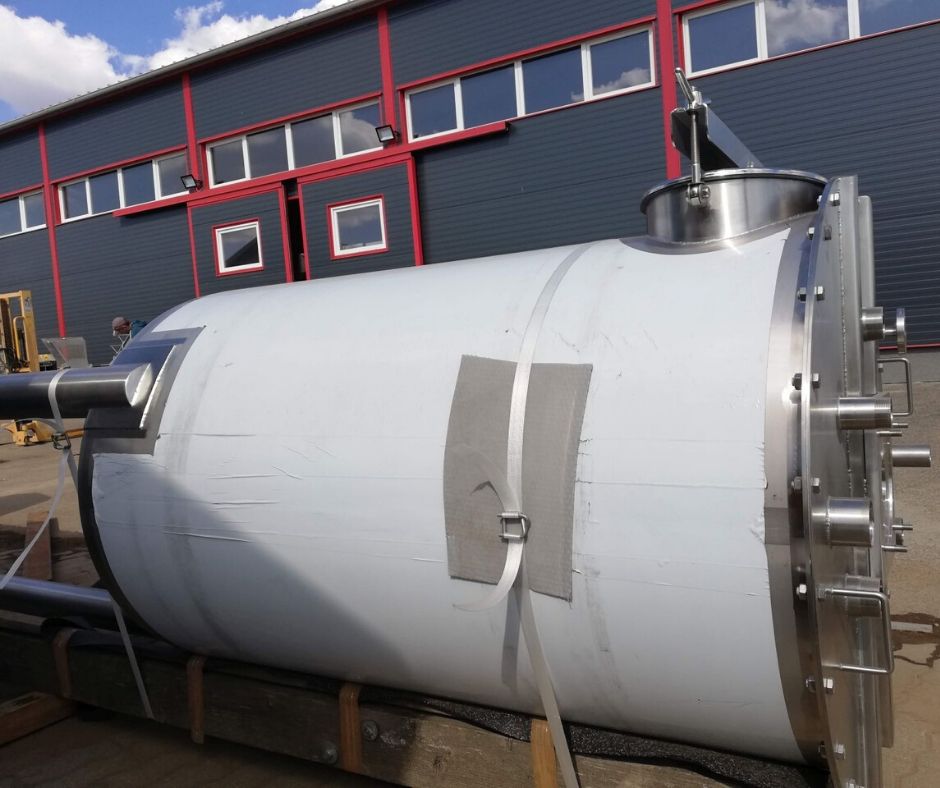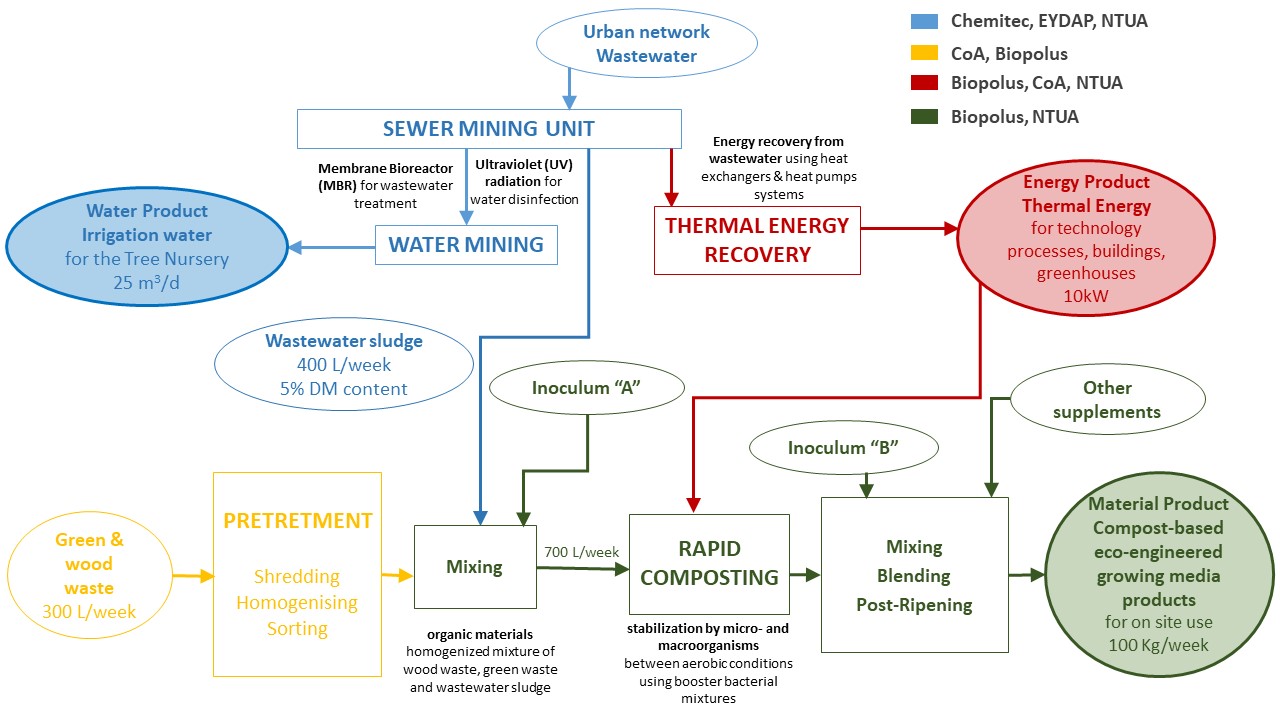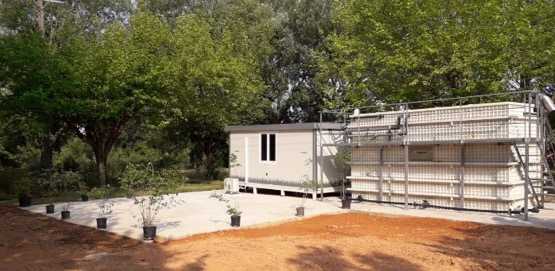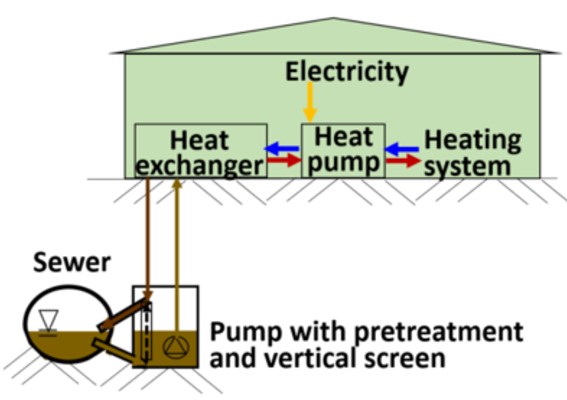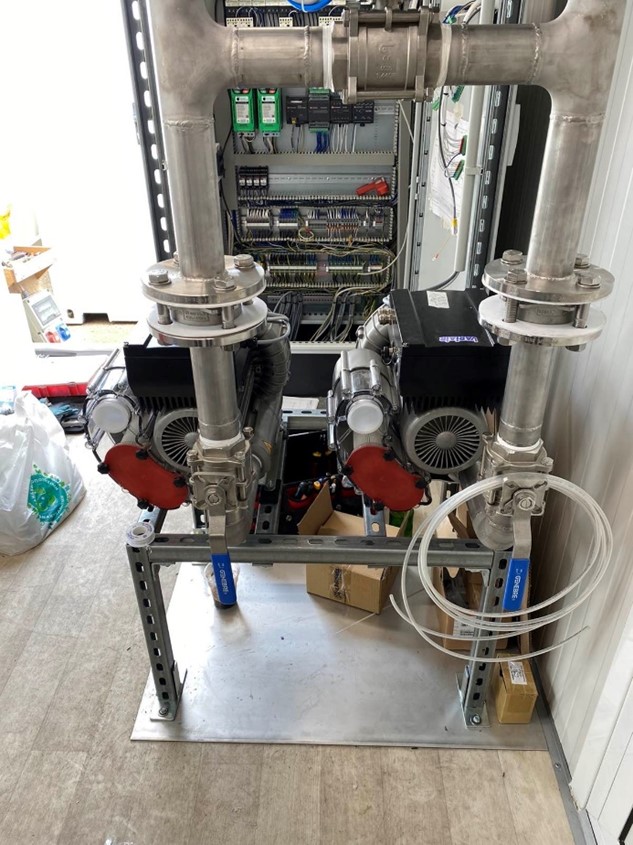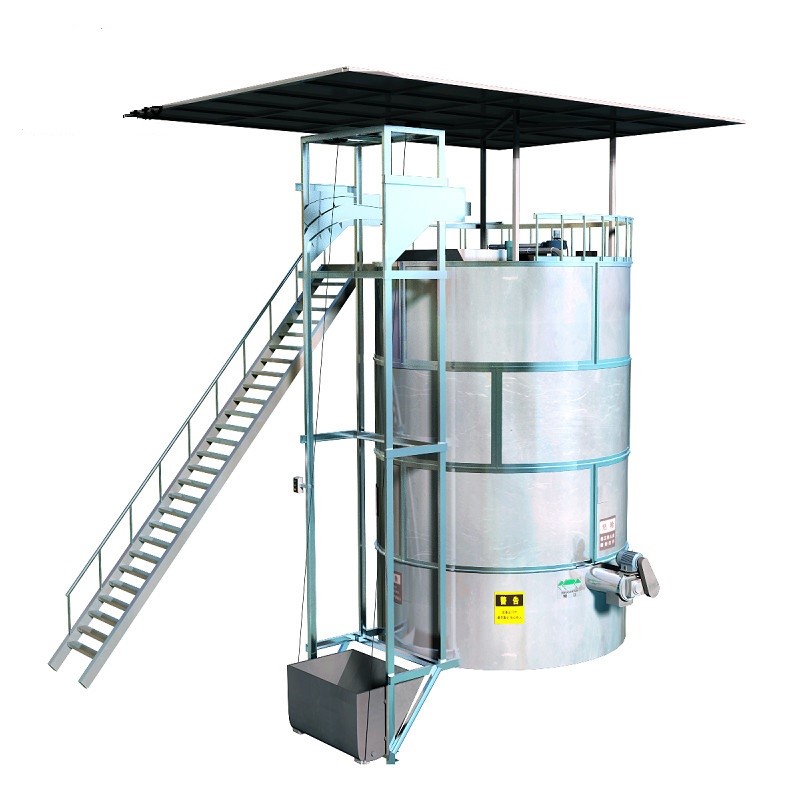Description
The Athens Nursery case focuses on the demonstration of innovative concepts of alternative water sources to reduce the use of freshwater resources, as well as integrated energy and nutrient recovery technologies on the transition to a CE-based water sector. In particular, the scope of the Athens pilot is to produce recycled water from urban wastewater with a sewer mining modular unit for urban green irrigation and other non-potable uses at the point of demand. The Athens Tree Nursery comprises 4 ha of vegetation, and supplies all urban parks and green spaces of Athens with plant material and uses potable water from Athens’s Water Supply and Sewerage Company (EYDAP) for its irrigation. Thus, the installation of a sewer mining (SM) modular unit for urban green irrigation at the point of demand has proven to be of direct benefit for the sustainability of the new metropolitan park of the capital. In particular, the SM technology is a decentralised, flexible and autonomous CE solution in which wastewater can be extracted locally from the sewers that run under any city, be treated directly on site and create valuable high quality reused water at the point of demand to be used for green spaces irrigation and for aquifer recharge during the winter.
Furthermore, the site was an ad hoc storage area for pruning waste from park maintenance activities across the city. Thus, the installation of a rapid composting technology in the site using excess dewatered sludge produced from the SM unit and treated pruning wastes from the nursery, is of direct benefit for the sustainability of the area. In particular, these two components (prunning and sludge) are being continuously mixed in a Rapid Composting Bioreactor, where the closed and aerated system speeds up the degradation process to create in approximately 2 weeks roughly 200 kg of high-quality compost as an on-site fertilizer to be applied on the place of demand (Nursery plants). In addition to water and nutrient recovery, a thermal recovery unit is also installed at the site to test energy recovery schemes through a heat exchanger and heat pump system, recovering approximately 15kWh of thermal energy from the treated wastewater. This heat is used to boost the Rapid Composting Bioreactor, for added system efficiency.
The overall goal is to create healthy and vibrant green spaces in the city of Athens. The pilot test shows that by upcycling two available waste streams: wastewater (& sludge) and green waste, Athens can have a sustainable solution for irrigation water and nutrient rich compost.
Applied technologies
Technology performance and best practices
Membrane bioreactor (MBR)
The MBR unit has the innovative advantage of an automated ICT system with pneumatic actuated valves controlled by a PLC unit, which allows continuous control and monitoring of the sewer mining unit by uploading data to an online system. The quality of the process and the effluent is controlled by a series of online sensors installed at several key points of the unit which provide perpetual information about the integrity of the operation. Conductivity meters were installed in the inlet and permeate tank, pH sensors in the membrane tank, a turbidity sensor in the permeate tank, an MLSS sensor in the membrane tank, a DO sensor in the aeration tank, and finally a nitrate and ammonium sensor in both the anoxic and aeration tanks.
Before the implementation of NextGen in the baseline scenario, the municipality of Athens had been irrigating the nursery with potable water, brought in by EYDAP from more than 250Km away at great cost. The results of NextGen project lead to the conclusion that the installed MBR/UV pilot unit can produce water of excellent quality in line with the standards specified in the Greek National legislation regarding wastewater reuse for unrestricted irrigation and urban reuse. More detailed results are presented in D1.3.
Thermal energy recovery via heat exchanger and heat pump system
Athens (EL) demonstrated a small-scale combined heat exchanger and heat pump system to use available excess heat from treated wastewater produced from a sewer mining unit as an energy source. Wastewater thermal energy recovery was successful scaled down from MW to kW scale using clean treated wastewater and commercially available heat pump making decentralised energy recovery technically and commercially feasible which also can be simple to operate. The small-scale heat recovery system demonstrated in the Athens site was set up in the 1-10 kW range. Thus, this resulted in acceptable system efficiencies with coefficient of performance (COP) values in the range of 4.0-5.12 in the heating mode and energy efficiency ratio (EER) values between 3 and 4.85 in the cooling mode. Although these values were lower than the typical values, 4.4-8.25 for COP heating mode and 6.5-6.9 for EER cooling mode, the system had less biofouling potential due to the fact that the system used the treated wastewater as the source of thermal energy. In addition, considering a full-scale decentralized system (250 m3/d irrigation water) the net recoverable thermal energy (heat pump energy use deducted) can be as much as 230 MWh/year. More than 67% of this energy recovery can be credited and used for general heating and/or cooling purposes (the remaining 33% is used for composting/nutrient recovery boosting). However, more studies on long-term operation under various feed quality conditions are required to improve its transferability and scalability as a sustainable urban water-energy solution. More detailed results are presented in D1.4.
Rapid composting bioreactor
In Athens, a decentralised solution a so called sewer mining unit was implemented. The excess sludge from the membrane bioreactor was thickened and together with pruning waste composted in a rapid composting bioreactor (TRL 7). The yearly produced amount of compost was 5 t, which was reused on-site. An up-scaled system referring to 600 population equivalents (PE) has the potential to produce 1 t N/a and 0.34 t P/a. This corresponds to 15% and 72% of the N and P loads in the raw wastewater, respectively. More details are presented in D1.5.
Outcome of assessments
Life cycle assessment
Sewer mining can substitute drinking water for irrigation at the tree nursery and helps to decrease the local water footprint. However, the membrane bioreactor needs more energy and related CO2e emissions than the central water supply in Athens. With composting of sewage sludge and green waste, a surplus of nutrient-rich compost can be exported. Heat recovered from the wastewater can be used to meet local demand, but should use green electricity to decrease the CO2e footprint of the entire system. Further LCA results can be found in D2.1.
Life cycle costing & cost effectiveness analysis
Local water reuse by sewer mining to substitute potable water for urban tree nursery irrigation is profitable. CAPEX and energy input are the main costs of this circular solution. Heat recovery from wastewater with heat exchangers has a positive annual cost balance, with the potential cost savings of recovered energy more than offsetting the CAPEX and energy input costs. The rapid composting should be further optimised as the potential annual cost savings related to the substitution of market fertiliser and the reduction of pruning waste disposal cannot yet offset the additional CAPEX and OPEX (mainly energy input). Further LCC and CEA results can be found in D2.2.
Quantitative microbial risk assessment (QMRA)
At the case study in Athens, an innovative approach to water reuse was applied by extracting urban wastewater with a sewer mining (SM) unit to produce safe urban green irrigation water at the point of demand. The QMRA was used to address and quantify potential health risks resulting from the exposure of people to irrigation water produced by the SM unit. More details are presented in D2.1.
Chemical risk assessment for the application of compost
The compost produced in Athens is used for horticultural purposes next to the sewer mining unit. Due to the limited spatial application, the soil ecosystem was assumed to be the only relevant endpoint within the risk assessment. Heavy metals were considered a potential hazard to the ecosystem, since they are not removed during treatment. For mercury and cadmium, a high risk was characterised after a long-term application of the compost. In order to manage the risk, more information on background concentration in soil and the atmospheric deposition is recommended. A monitoring of heavy metals during the early years of application can contribute to the risk management and eventually help determine a tolerable yearly fertiliser amount. Detailed results can be found in D2.1.
Legislation and policy recommendations
In NextGen, we analysed the policy and regulatory landscape to identify relevant opportunities for and barriers to upscaling circular economy in the water sector. Our recommendations, targeted at the revised Urban Wastewater Treatment Directive, are summarised in our policy brief. These recommendations focus on creating meaningful incentives and policy drivers towards circular systems (e.g., through energy and carbon neutrality targets, and additional guidance on water recycling) and simplifying the route to market for recovered products (e.g., fertilisers and other materials). More details can be found in our policy brief.
- EU (2019/1009) Regulation of the European Parliament and of the Council of 5 June 2019 laying down rules on the making available on the market of EU fertilising products and amending Regulations (EC) No 1069/2009 and (EC) No 1107/2009 and repealing Regulation (EC) No 20
Applied products
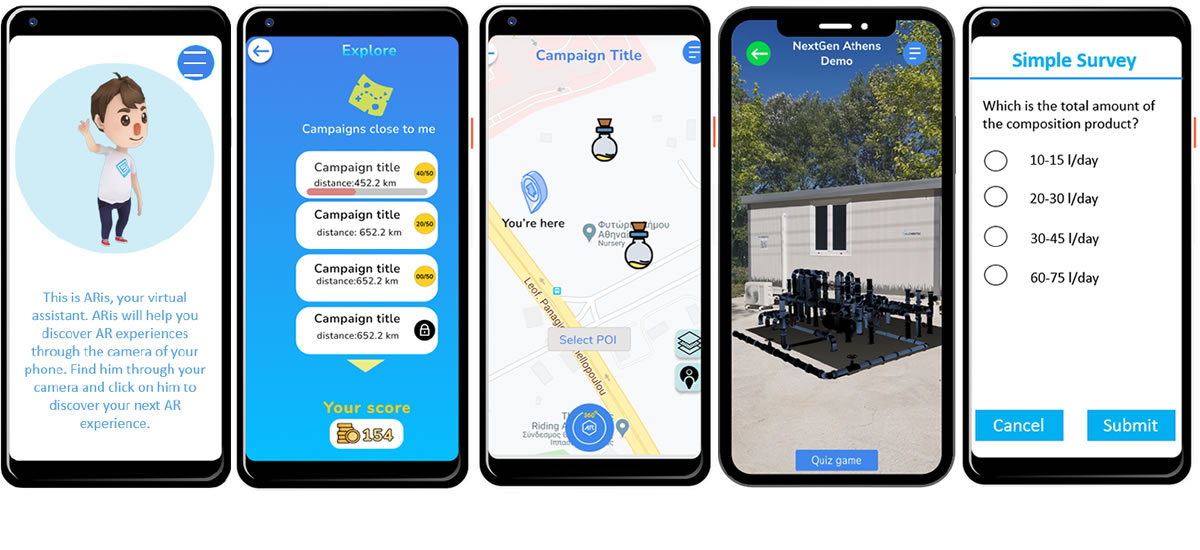
MobileAR solution for citizen engagement towards CE approach
The AR application (CirculAR) used in this study is developed in the NextGen project's framework (H2020) to improve cit…
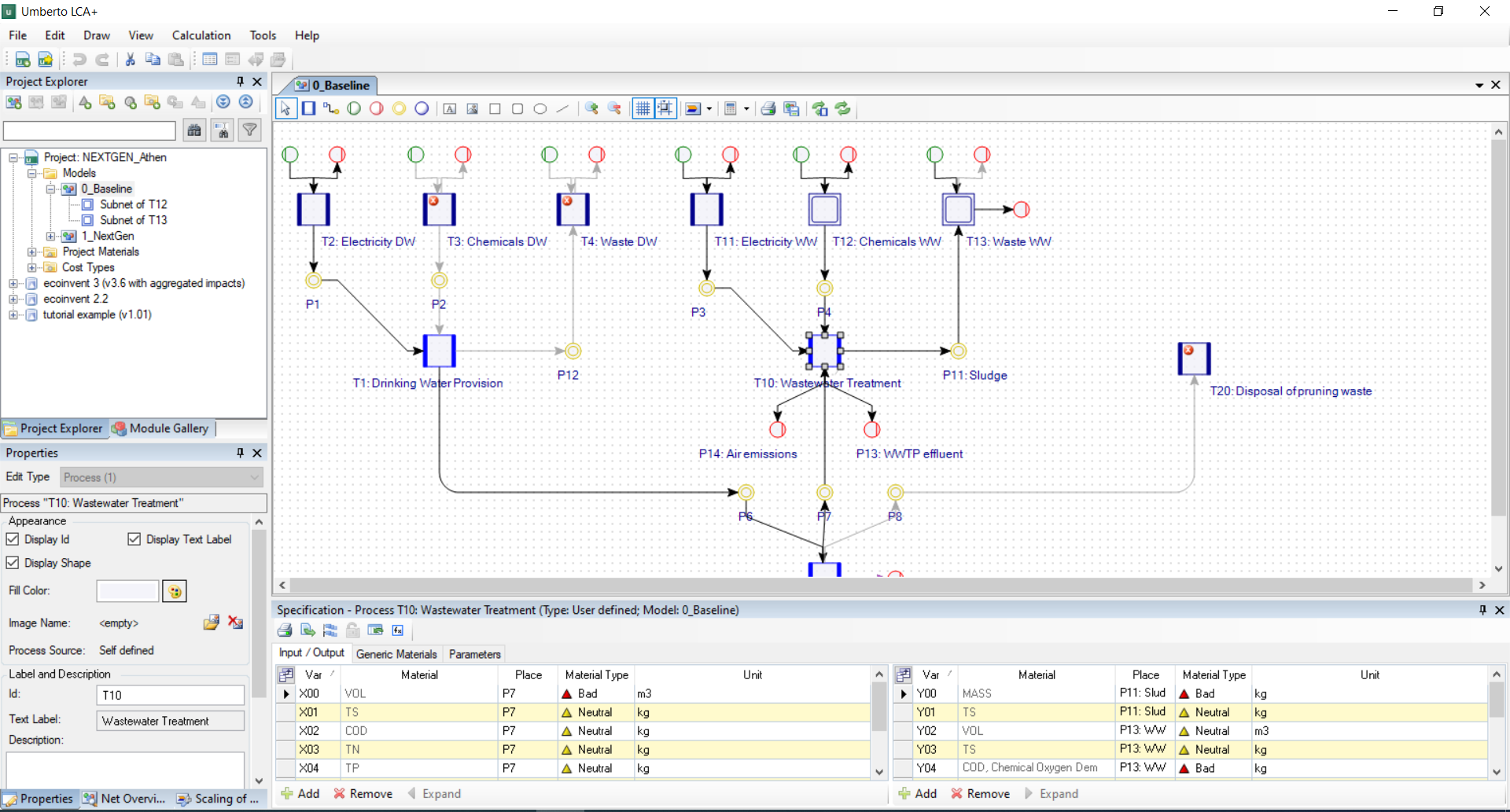
NEXTGEN + ULTIMATE Life Cycle Assessment
Life Cycle Assessment is a standardized framework (ISO 14040) for assessing the potential environmental impacts of a pr…
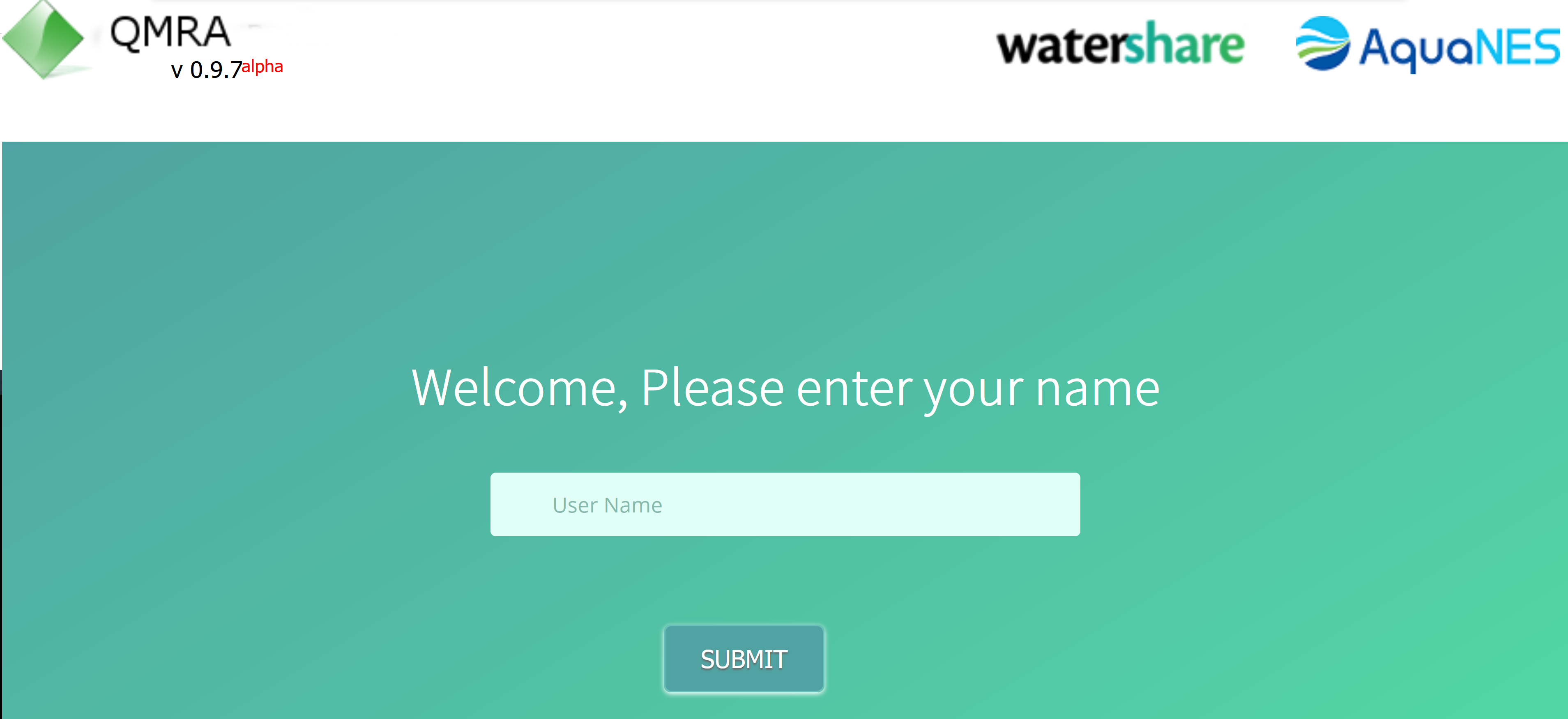
AquaNES QMRA tool for water reuse scenarios
Water quality assessment and associated risk assessment is essential for the evaluation of water treatment. It is not a…


